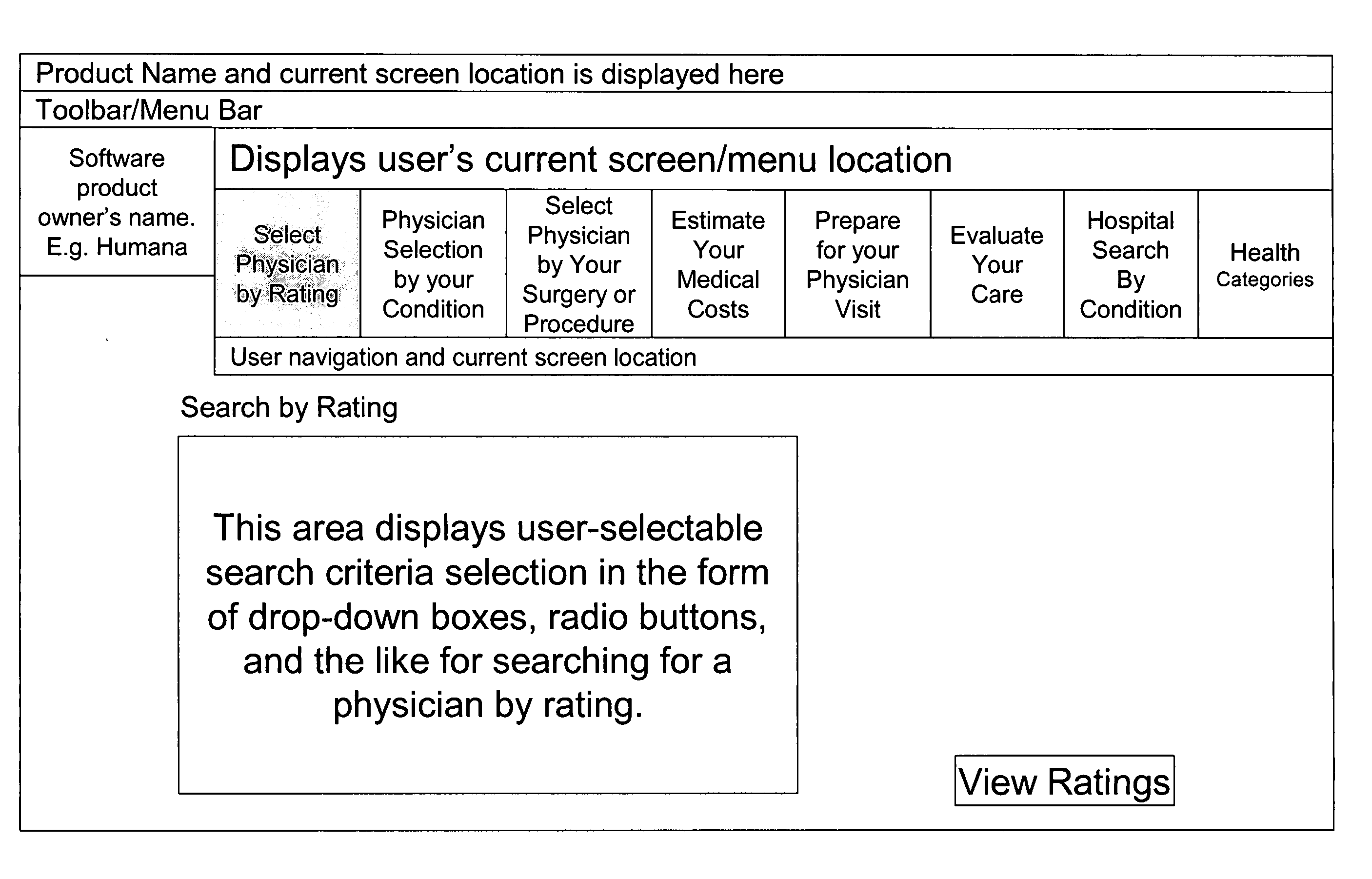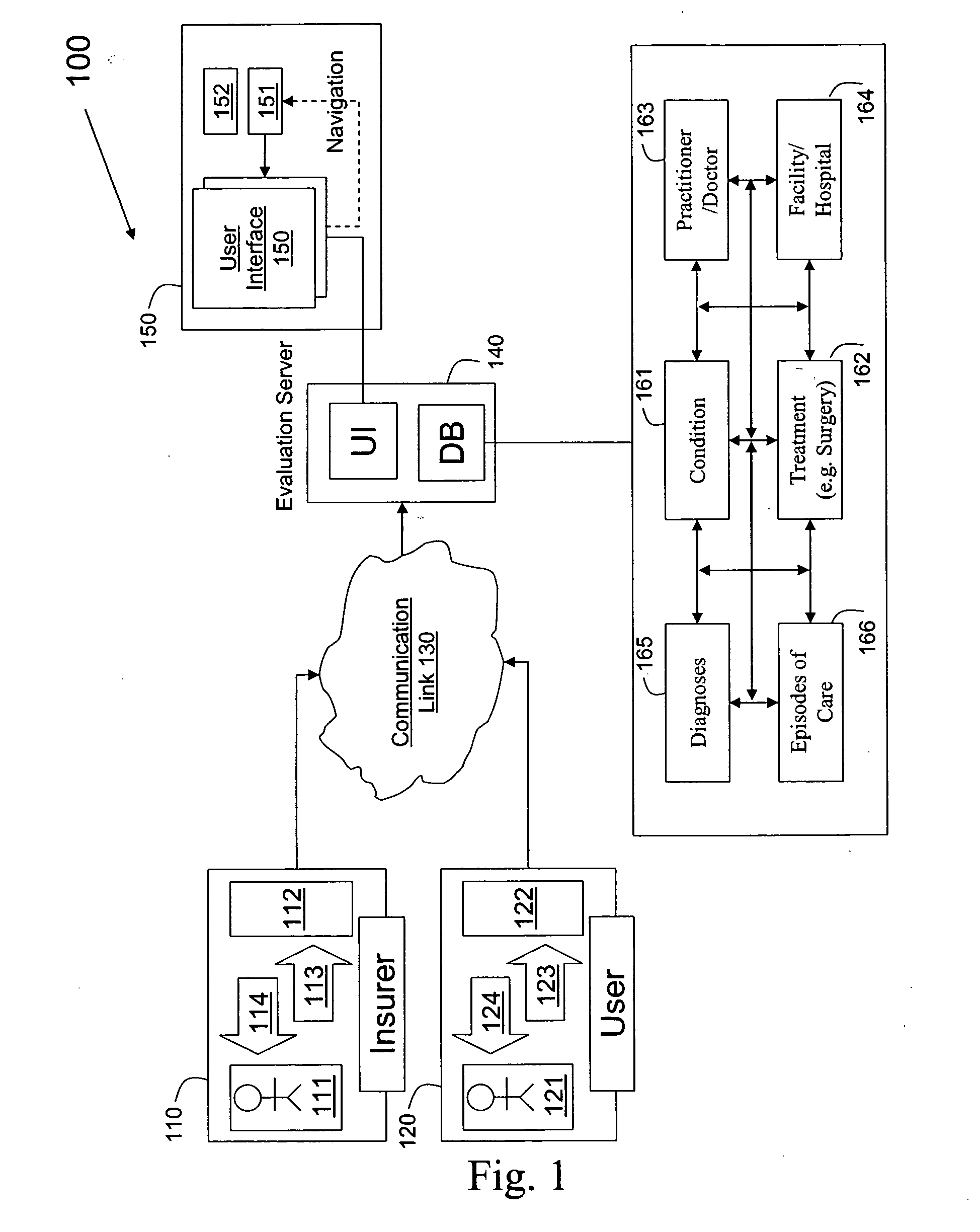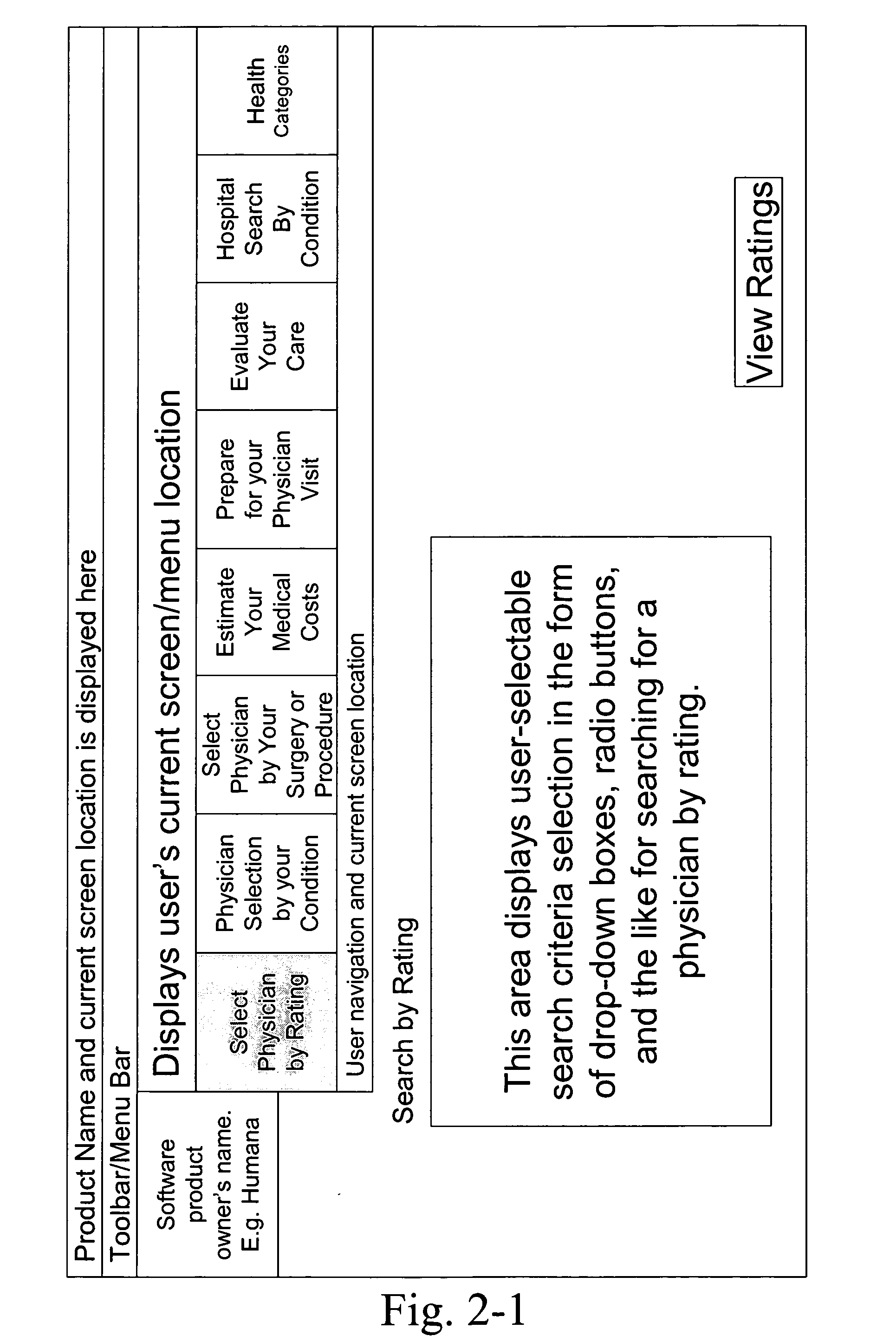In addition, cost information about
patient treatment is often aggregated and does not identify which providers are most cost-effective for
surgery or for treating that patient's specific condition.
Some known individual provider ratings, for example those provided by the NCQA (National Committee on
Quality Assurance) provide some guidance to healthcare consumers on treatment of diabetes or heart conditions, but do not provide adequate or detailed enough information for selecting any particular medical provider based on individual provider quality or the user's actual medical condition, or specific
treatment need.
Even when users do have access to performance scorecards for individual doctors, known measures of performance relate only to general capabilities of each particular doctor, and do not give useful information regarding capabilities of any particular doctor with regard to a specific healthcare need (such as the patient's medical condition, surgical or procedure need).
Although the
specialty in which the particular doctor practices, or the particular
hospital department in which the doctor practices, might provide very rough information, the information is far too general to allow users to make adequately informed decisions about provider selection, particularly when users have to pay significant out of pocket monies for such health care services.
This problem is particularly acute when the user is looking for doctors that can best treat the user's particular medical condition, particular surgical need, particular
medical history, or user's particular
demographic profile.
In known systems and provider directories, information about providers is limited to each medical provider's certifications, credentials, malpractice history, service locations, or
general practice areas.
While this does give the user some information about the general class of medical conditions that medical provider is capable of treating, it has the drawback of failing to provide specific information regarding the medical provider's actual
record of prevention and treatment of the user's specific medical problems (whether current or anticipated).
Even where there is an attempt to measure individual doctor performance, current models do not adequately serve the user in providing unbiased and statistically valid measures.
Disregarding their possible bias and statistical invalidity, the measures that do exist are not representative of the particular medical conditions and
patient population diagnosed and treated by those medical providers.
Current performance measures generally focus on a few aspects of the medical provider's practice, but do not reveal enough information to adequately judge the entire range or scope of the medical provider's practice across different patient panels and patient treatments, including relatively healthy patients, occasionally sick patients, and chronically ill patients.
This method has the substantial drawback since each medical provider's
score is most heavily weighted toward the component of that average in which they treated the largest number of patients.
This drawback is substantial and creates biased results because, among other reasons, certain measures of quality may apply to patients with a first type of condition (e.g., preventative care of the heart—
cholesterol screenings) where the patient sample size per doctor is very large, but are substantially valuable in measuring the same doctor for a second type of condition (e.g., patients with
coronary artery disease) where the patient sample size is small.
 Login to View More
Login to View More  Login to View More
Login to View More 


